Original: Deji Drolma
In the spring of 1950, his parents gave him a historic name “Chunsheng” because he was born in the first year of the founding of New China.
When he was in junior high school, he didn’t know why Chunsheng named himself “Eagle”. He didn’t expect that “he” would really fly to Tibet like an eagle.
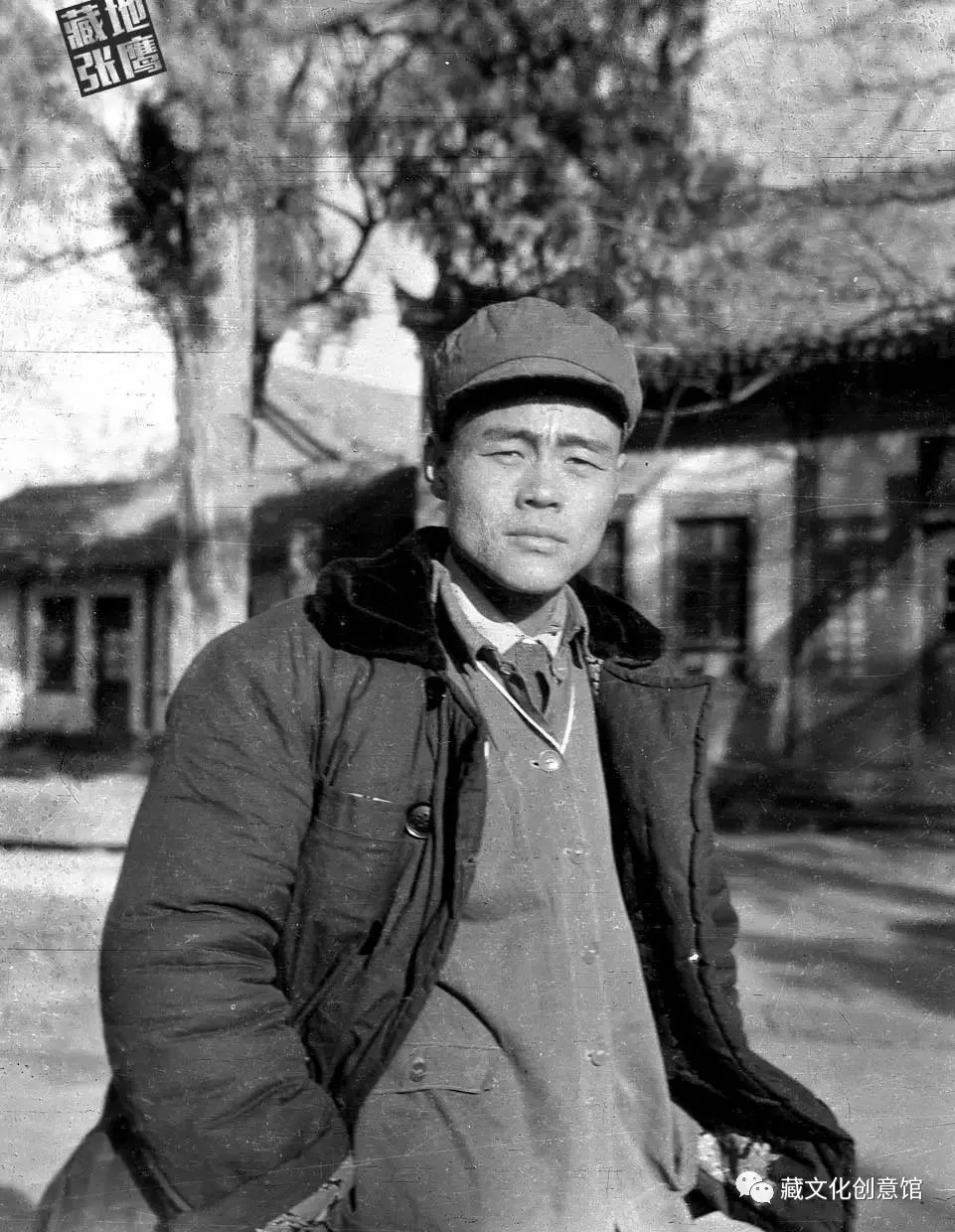
In 1972, Zhang Ying (Chunsheng) was at the Pucheng County Cultural Center
In the 1960s, the Chinese countryside was still very backward. Apart from farming, painting was not a serious matter in the eyes of everyone. But Zhang Ying was very fond of painting at that time, and he was very fascinated by it. He has never figured out why he embarked on the artistic path of painting just because of his love.
The painting materials at that time could only be copied by cutting some pictures from books and newspapers, and this kind of persistence gradually became a habit of his. When going to the market, the few cents my parents gave me was reluctant to buy snacks, so I saved up and bought paper, pens and paints. Over time, when there were happy events in the village, he would paint window grilles, because the painting skills were also well-known in the village.
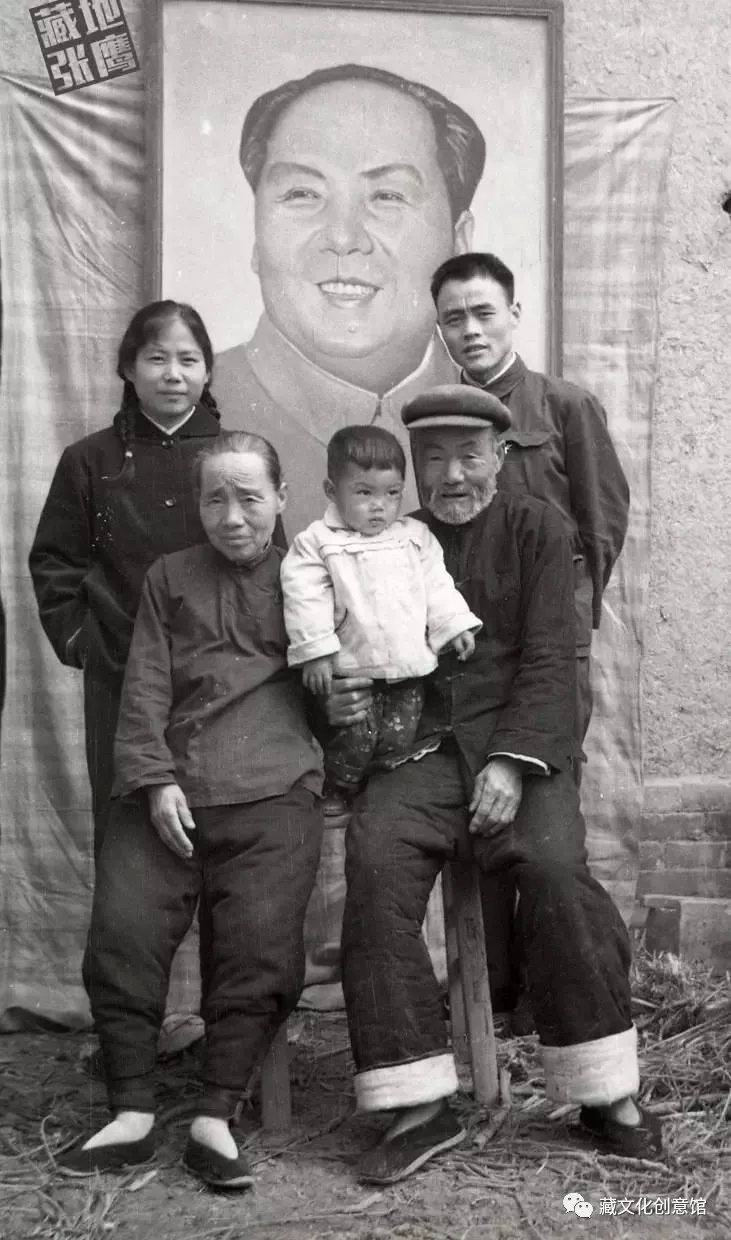
The portrait of Chairman Mao in the background was painted by Zhang Ying in 1971
In 1966, Zhang Ying was admitted to Xingzhen Middle School in Pucheng County. In 1968, he returned to the hometown where he was raised like thousands of “old three”. He never gave up his ideals under the difficult conditions in the countryside. Pursue, and work harder, as long as the farm is slack, I will paint.
During those days in the countryside, he painted portraits of Chairman Mao, class struggle comic book wall charts, “earth movies” (glass slide paintings), and the earthen slide projector he assembled himself, which was very popular in the culturally poor countryside at that time. No small impact.
Although the rural areas at that time posed challenges to Mr. Zhang Ying, during the interview, he talked about that unforgettable and unforgettable art experience with a warm smile on his face.
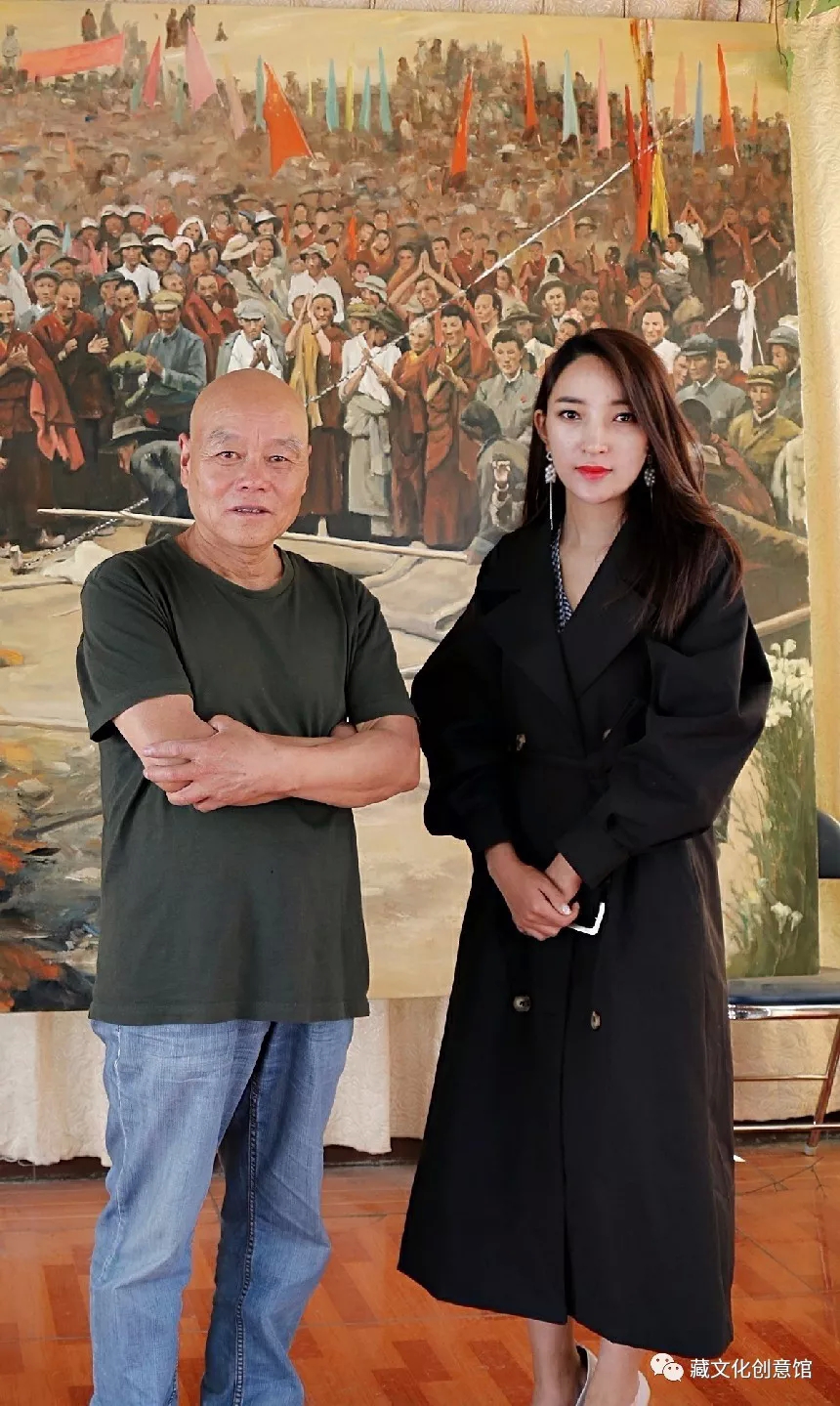
Teacher Zhang Ying and Deji Drolma
In 1972, Zhang Ying ushered in a turning point in his life.
At that time, he was painting the propaganda poster of “Defending Zhenbao Island” at the Cultural Center of Pucheng County, Shaanxi. It happened that the Tibet Qin Opera Troupe came to recruit an artist, and he fought hard for this opportunity, and finally, he was admitted among many applicants. He was so happy at that time, and he never dreamed of coming to Tibet.
People in that era, when they mentioned that Tibet was no less than climbing Mount Everest in people’s minds today, they couldn’t help feeling afraid, especially the villagers couldn’t understand it. My mother often hid in a corner and wiped her tears. The wife also inevitably feels reluctance and sadness. In the end, the family was persuaded by Zhang Ying’s firm attitude of going to Tibet.
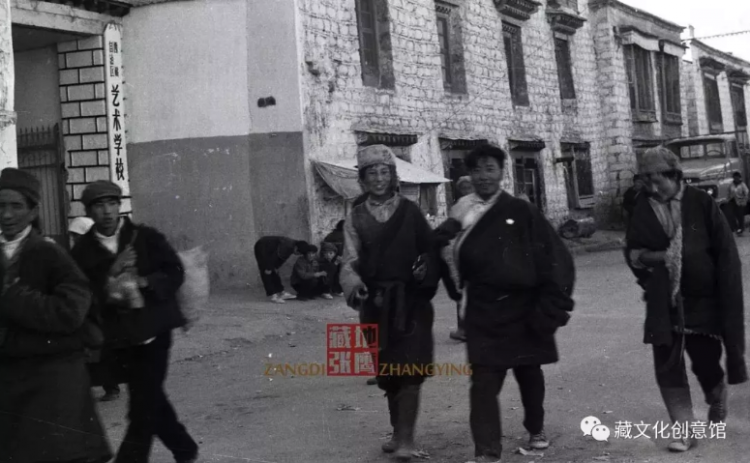
At the corner of the East Street of Old Barkhor Street, Tibet Art School is the seat of the former Tibet Qin Opera Troupe.
When Zhang Ying first arrived in Lhasa in 1973, he lived in a very old mansion in the southeast corner of Barkhor Street, which was also the location of his original work unit, the Tibet Qin Opera Troupe.
At that time, he was placed in a hut built on the platform of the third floor of the old house, which was so small that it could only accommodate a small bed and a table, but this was already a special care for him as an artist (other students were collectively dormitory). Just because his hut is built on an open platform, he can have a bird’s-eye view of various customs and customs in Barkhor Street every day, and listen to the sounds of nature from all directions.
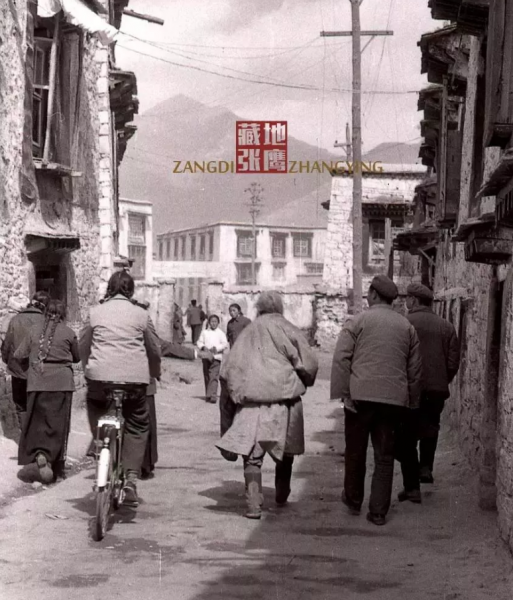
A corner of old Barkhor Street
Later he found out that the place where he lived was the residence of the former Tibetan government official Suokang’s family (it was converted into the largest shopping mall on Barkhor Street in the 1990s).
In the southeast corner of the opposite is a two-story yellow house. This place became popular at home and abroad and attracted countless tourists.
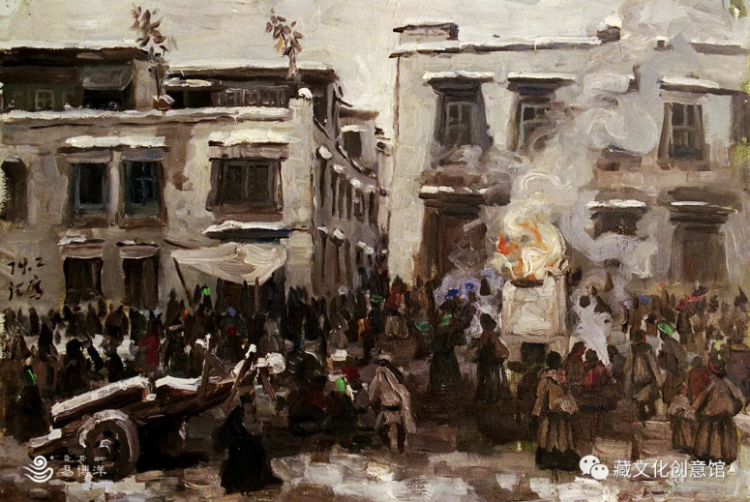
Zhang Ying “Ice and Snow Barkhor Street” 1979 (oil painting on paper) 54×40
In the past, there were many large courtyards like this in Barkhor Street, all of which were residences of noble officials. The structures were basically similar, but the size and scale were different. The Xiazha aristocratic mansion on Barkhor Street South Street, in the past, the aristocratic mansions and official residences in Barkhor Street were basically similar
The overall building is square (this may have a certain religious meaning), generally divided into the main building, the courtyard, and the corridor. The main building faces south or west, and is three stories high. As a rule of thumb, it probably cannot be higher than the Jokhang Temple!
The ground floor of the main building is generally a warehouse, the second floor is housing, and the third floor is a Buddhist hall and a place for discussion. A more particular mansion is a large courtyard with a small courtyard, like a maze, but what is amazing is that all the houses can see the sun, which is the architectural ingenuity and principle of a large courtyard with a small courtyard.
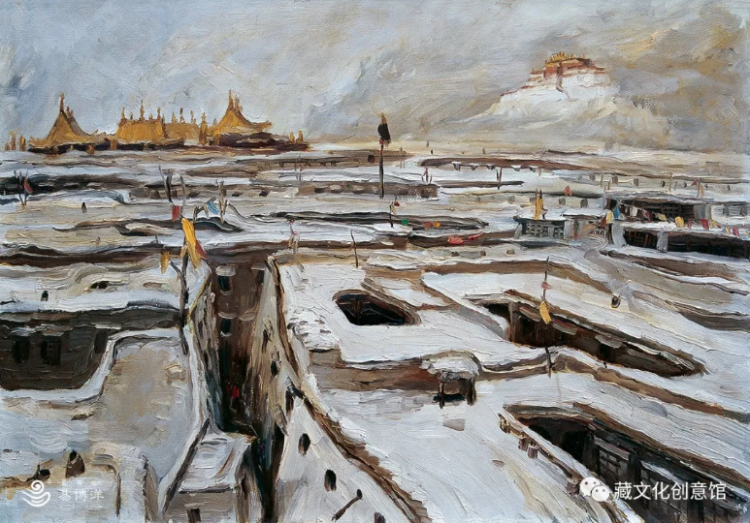
Snow City Lhasa, 1979, Oil on paper, 78x54cm
In front of the main building is a large yard surrounded by two-story corridors, which used to be used as handicraft workshops or residences for servants. There is a well in the middle of the yard. In the past, the water in the well in Lhasa was very shallow, but it was not more than ten feet long. You can hang the water with a rope. Later, for more convenience, someone erected a wooden pole beside the well, and installed a long lever on the top. Tie a stone at one end and a rope at the other end, so that lifting the water will save a lot of effort.
At that time, only large houses in Barkhor Street had water wells, so the nearby residents came to their yards to carry water every day. People at that time were very simple, no matter what nationality, everyone got along very well, like a family.
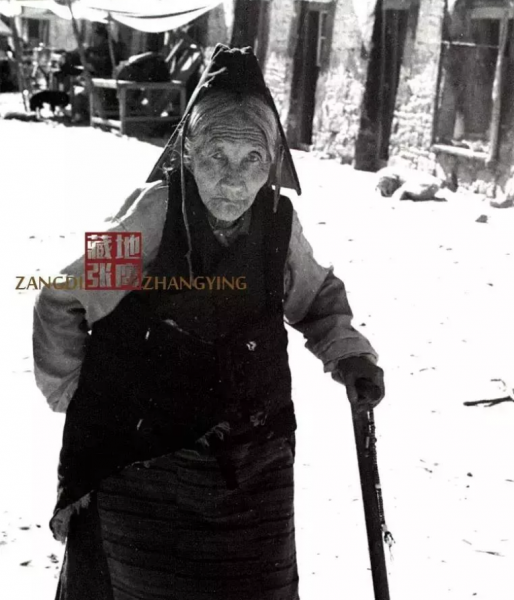
In the late seventies
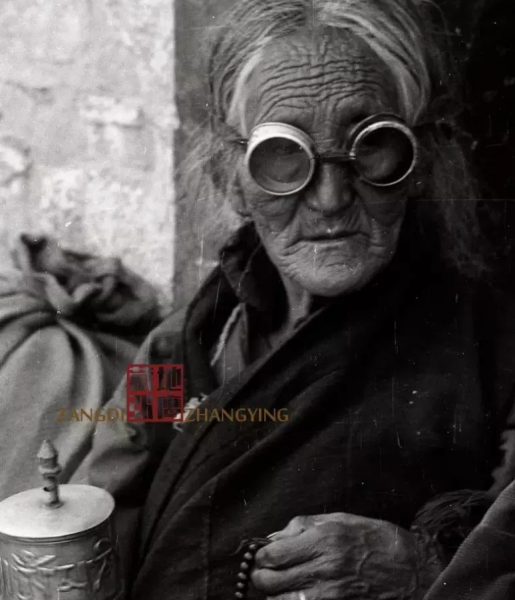
Old man wearing goggles in Barkhor Street in the late 1970s
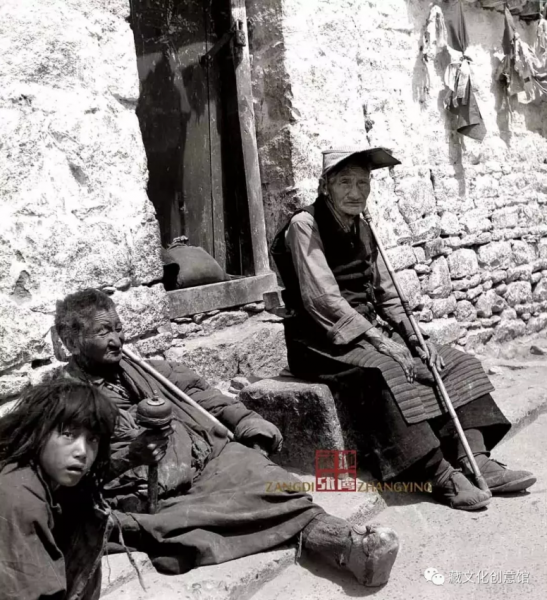
People turning to rest in Barkhor Street in the late 1970s
Barkhor Street has always been a window of Tibetan culture. All the changes in Tibet first started here. The so-called Lhasa in history actually refers to this place.
At that time, Barkhor Street looked very simple and quiet, with small shops on both sides shoulder to shoulder. Although they were not big, they were all exquisite. Many shops hung photos of Nepalese kings and queens, because most of these shops were Nepalese shops.
Therefore, Barkhor Street at that time was very exotic. Compared with the mainland, I am afraid it was full of “foreign” atmosphere. “Foreign goods” can be seen everywhere, and most of them are imported from the UK, such as Lanling bicycles, Swiss watches, Zeiss cameras, etc., are commonplace on the streets of Lhasa, but people from the mainland or even big cities open “foreign meat” in this remote place.
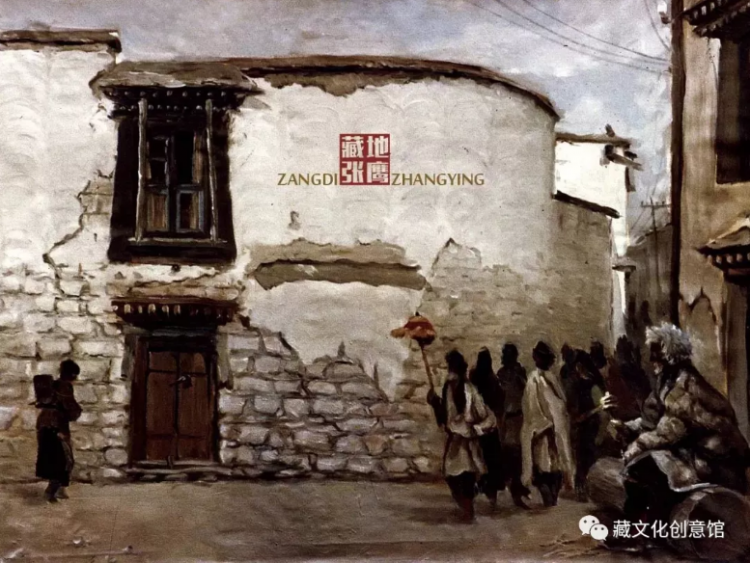
A corner of Barkhor Street, 1978, oil on canvas, 52x38cm
Opposite the troupe, there is a shop specializing in British gas lamps, which is filled with a wide variety of gas lamps and gas lamp accessories, large and small. Zhang Ying’s oil painting “A Corner of Barkhor Street” depicts the south side of this gas lamp shop.
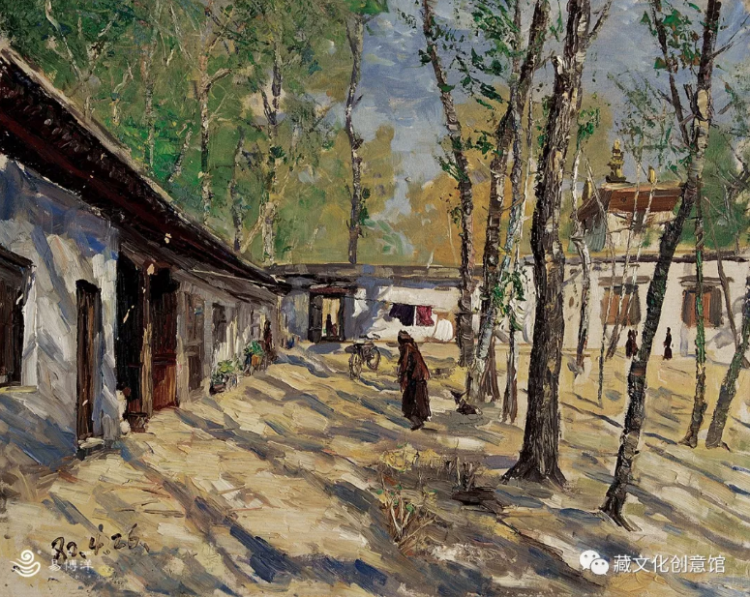
“Spring in the Small Courtyard” 1980 (oil on canvas) 59x47cm
In addition, there is another scene that is still fresh in Zhang Ying’s memory.
At that time, the stray dogs on the streets of Barkhor Street had no owners and roamed freely. Especially at night, the whole Barkhor Street became a dog’s world. These dogs all have their own territories with clear boundaries. For example, dogs on South Street cannot go to East Street, and dogs on East Street cannot go to South Street. Otherwise, they will defend their territories with each other and attack in groups. But, amazingly, all dogs get along very well with people.
Slowly he noticed that Tibetans love animals very much. In their minds, all creatures in this world are a big family and deserve respect. They take special care of those weak creatures. Therefore, whenever Tibetans come to Barkhor Street to pray to the Buddha, in addition to bringing offerings for the Buddha, they will not forget to bring some dog food, which leads to more and more dogs gathering here. It was only later that I realized that protecting and treating living beings kindly is one of the tenets of Tibetans.
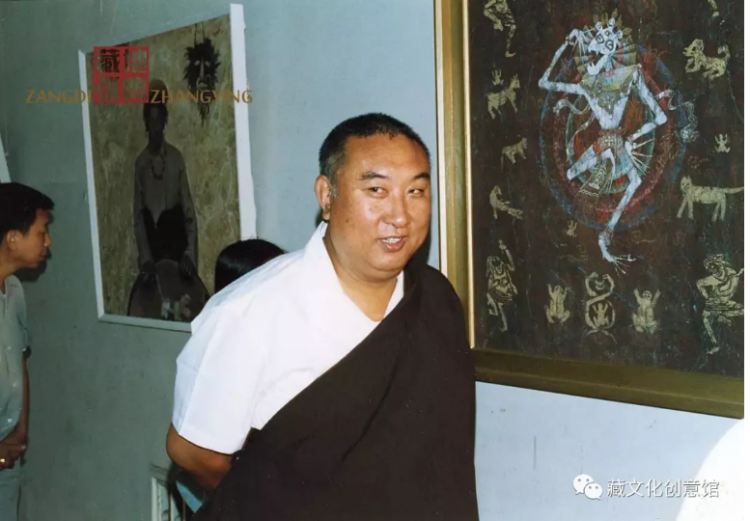
In 1988, the 10th Panchen Lama took a photo in front of Zhang Ying’s works when he watched the “Exhibition of Tibetan Contemporary Art Works” in the National Art Museum of China
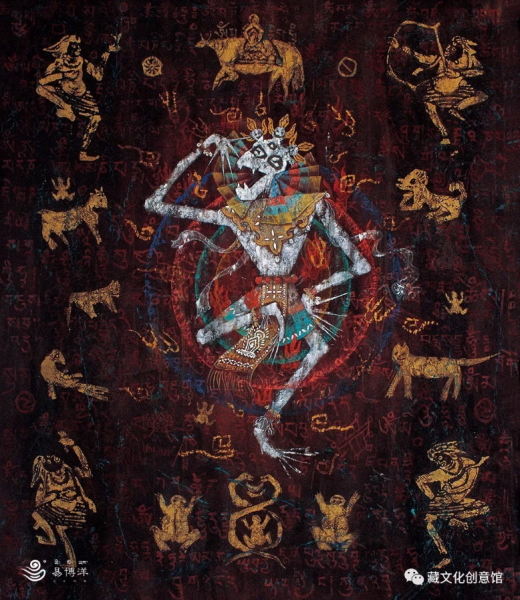
Spirit Dance 1988 Acrylic 97x110cm
In 1974, Zhang Ying was transferred to the Tibet Peking Opera Troupe and the Tibet Henan Opera Troupe. In 1983, he was transferred to the Tibet Tibetan Opera Troupe. In his words, the Tibetan Opera Troupe was another turning point in his life. Just after the design of “Pema Wemba” was coldly received because it was too advanced, he ended his stage art career for nearly two decades, and fate brought him into a new field.
In 1986, he was seconded to the Art Research Institute of the Tibet Cultural Department, and concurrently served as the art and picture editor of “Chinese Opera History: Tibet Volume” and “Four Music Collections: Tibet Volume”.
In 1991, he was officially transferred to the Institute of Tibetan National Art. In the past ten years, he and Mr. Bian Duo and his team have been traveling around the rural grasslands of Tibet for almost half a year every year to collect pictures.
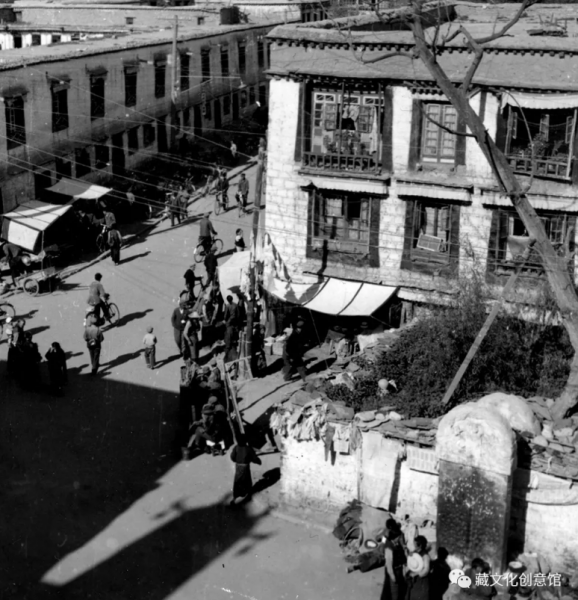
The old appearance of the Jokhang Temple before the 1980s
From the Yalong River Valley in southern Tibet, the birthplace of Tibetan culture, to the vast agricultural area of Houzang rich in Tibetan culture, from Ngari, the birthplace of Zhang Zhung culture, to the vast Qiangtang grassland, from the Gongbulin area in eastern Tibet to Kangduan Mountains area, and even visited all major Tibetan areas in Qingganchuan.
I can’t remember how many counties, townships and villages I have been to in those years. Getting lost, overturned, and sleeping in the open are commonplace, but he enjoys it.
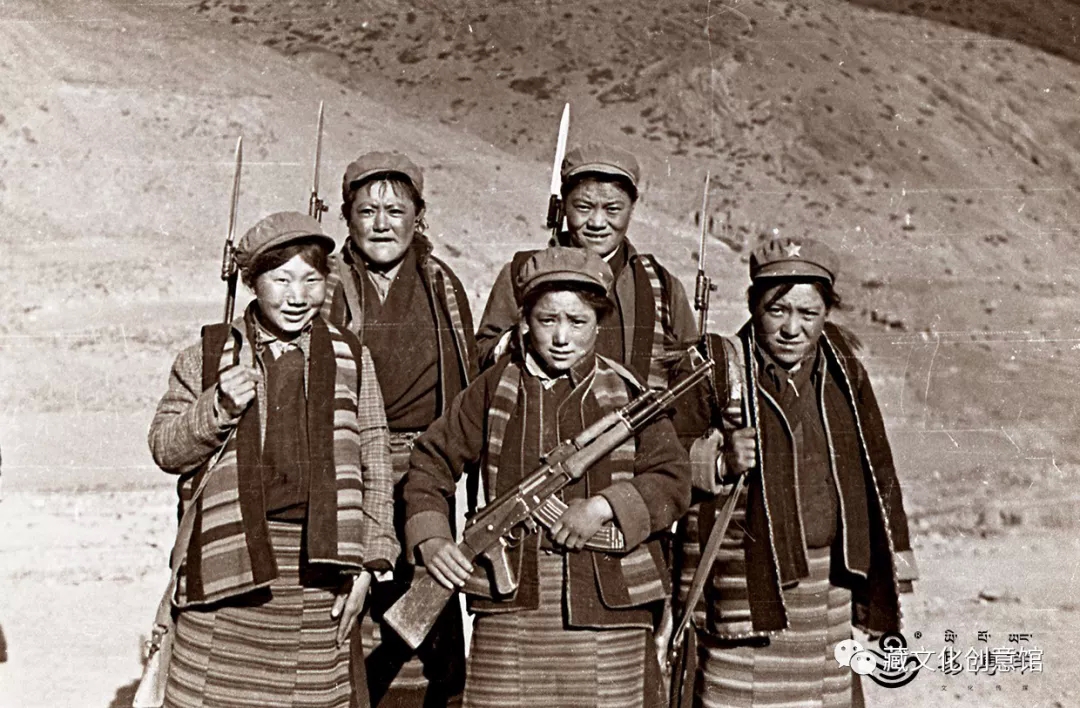
Frontier female militiamen in Longzi County, Shannan in the 1970s
In the early 1980s, Tibet was still in the early stages of reform and opening up, and various folk festivals, customs and traditional culture had just recovered, and it basically maintained its original, natural, simple, profound, and historical appearance full of snow-covered country flavor.
Zhang Ying said: “Thinking back on the past, it is simply a rich gift from God.”
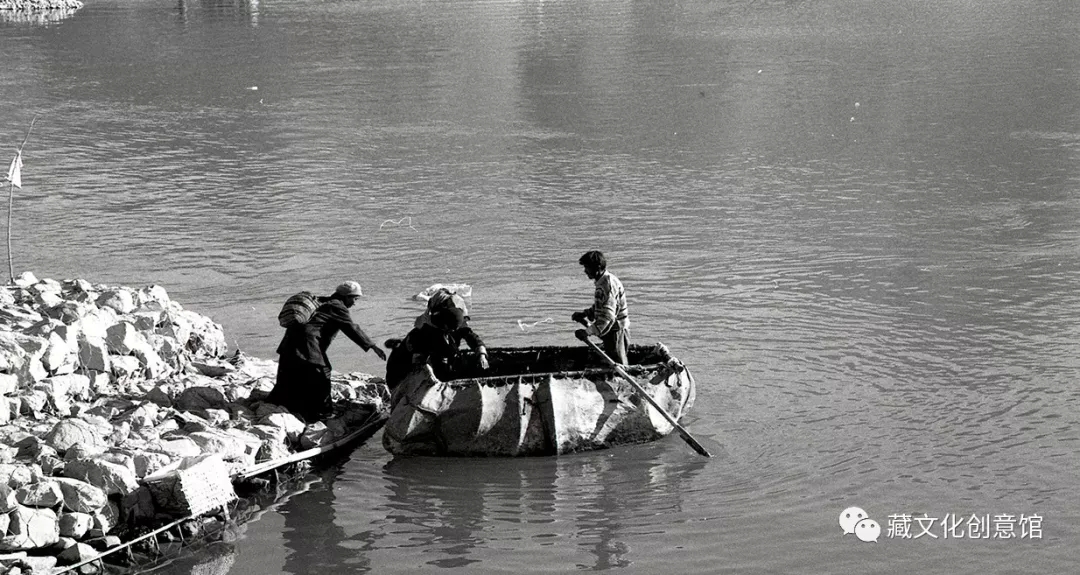
Cowhide boats on the Lhasa River in the 1980s
But at that time, Zhang Ying didn’t realize the cultural and historical value of photography. He just felt that everything in front of him was so beautiful, and he was in a state of excitement and excitement every day.
Although the shooting conditions at that time were still very poor and the film was limited, he could no longer restrain his enthusiasm for shooting. He spent almost all his money on purchasing photographic equipment and handing in papers. He once became a veritable photography enthusiast. Does not admit that the influence of photographic works far exceeds his “professional occupation” – painting.

“Yak Dance” 1990 Acrylic painting 60x60cm
But he is very clear in his heart that he only used a camera to record his life and collected materials, which was entirely out of a painter’s vision and intuition, but he did not intend to insert willows and willows into shades to become a kind of testimony, recording the ordinary life he experienced in Tibet. moment.
Perhaps because of this, his works of art are closer to life, more humanistic, and more unpretentious and natural.
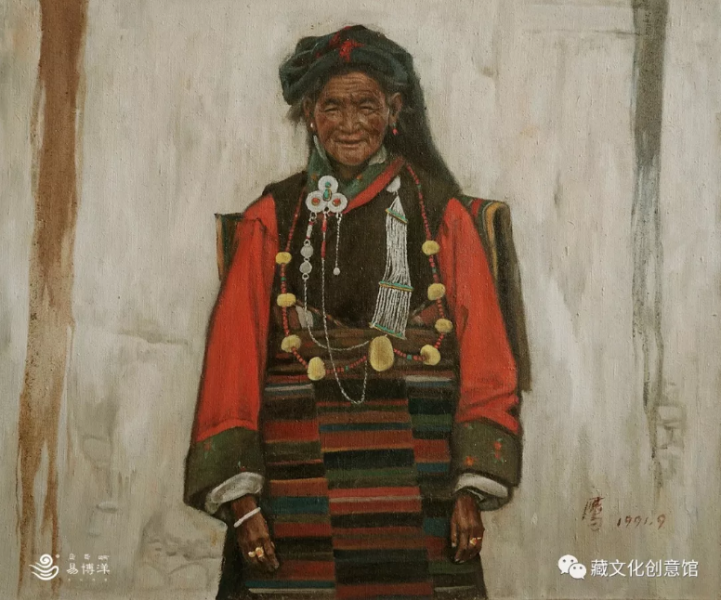
The Old Man of Gamba, 1991, oil painting, 60x50cm
Zhang Ying came to Tibet because of his passion for painting, fell in love with Tibetan culture, also fell in love with photography, and fell in love with collecting. Over the past forty years, he has accumulated tens of thousands of pictures and more than a thousand collections, and later Zhang Ying published the book Nearly twenty books.
In 2011, his first collection of oil paintings, “Forty Years of Love in the Snow Region 㾗. Zhang Ying Tibet Oil Painting Collection” was published. On another new start.
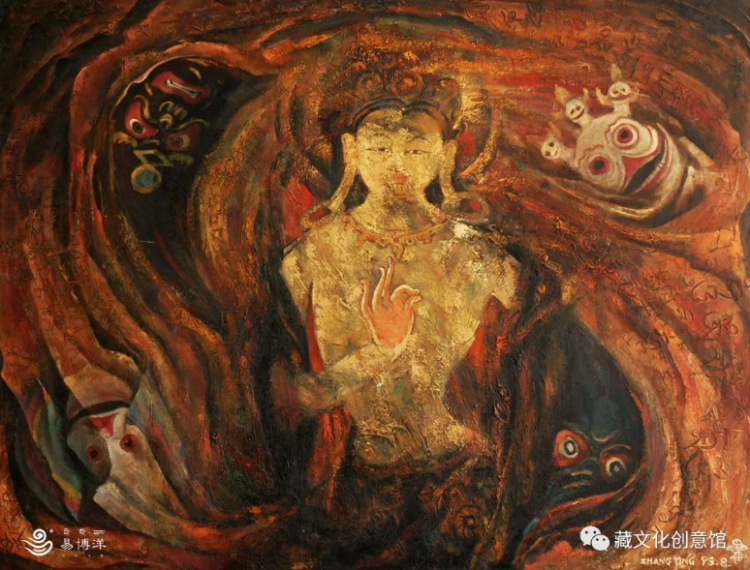
Bodhisattva, 1993, oil painting, 116x89cm
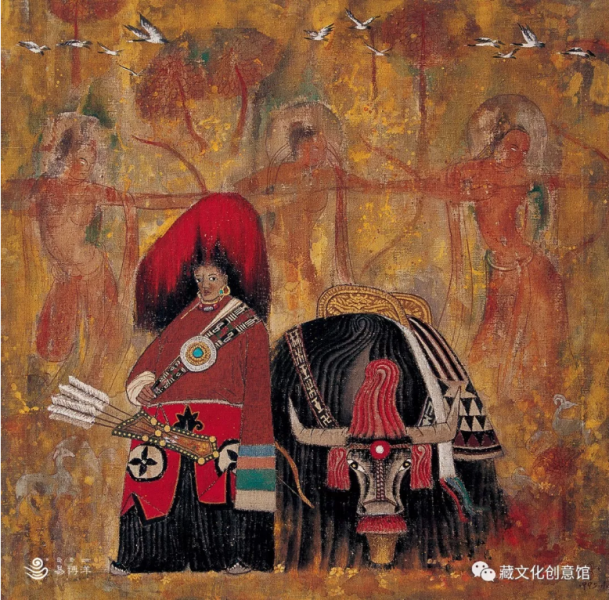
Rider 1995 Acrylic 64x64cm
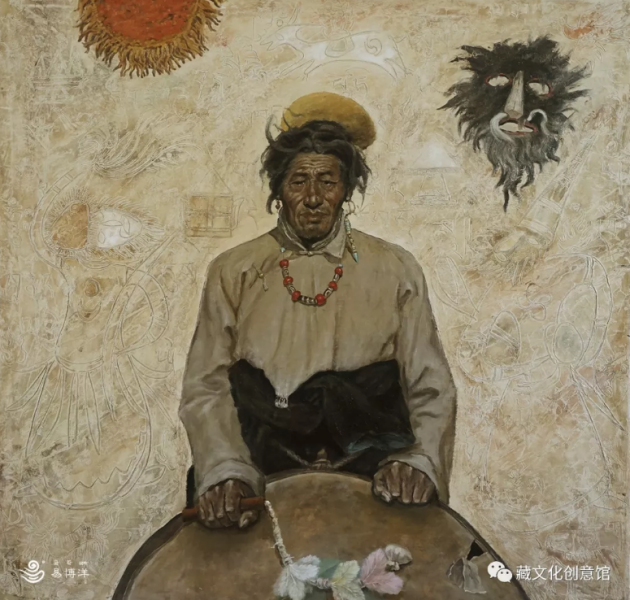
Drummer, 1996, oil painting, 114x110cm

Wine Song ( 2003 ) oil on canvas 90x70cm
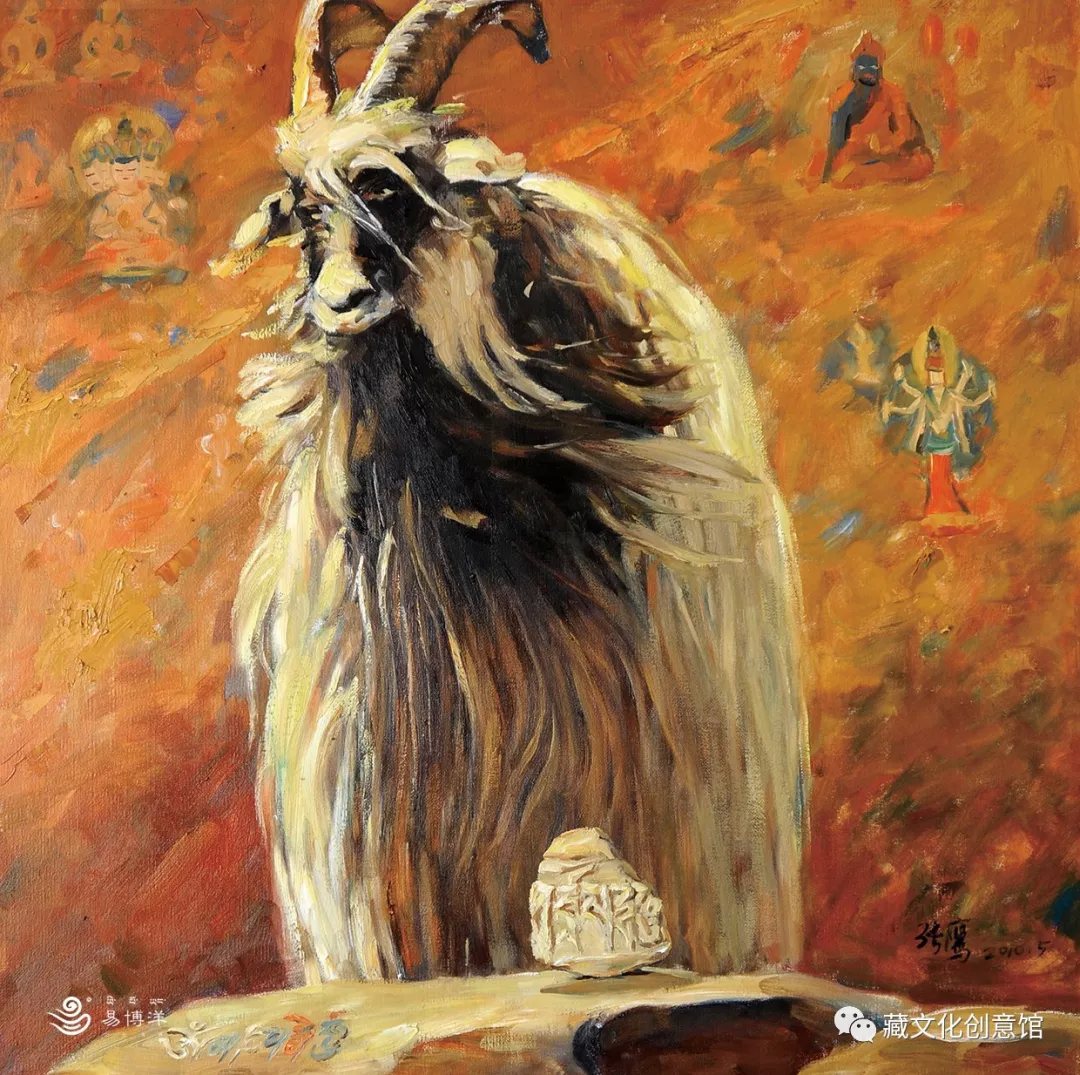
“God Sheep” 2010 oil painting 90x90cm
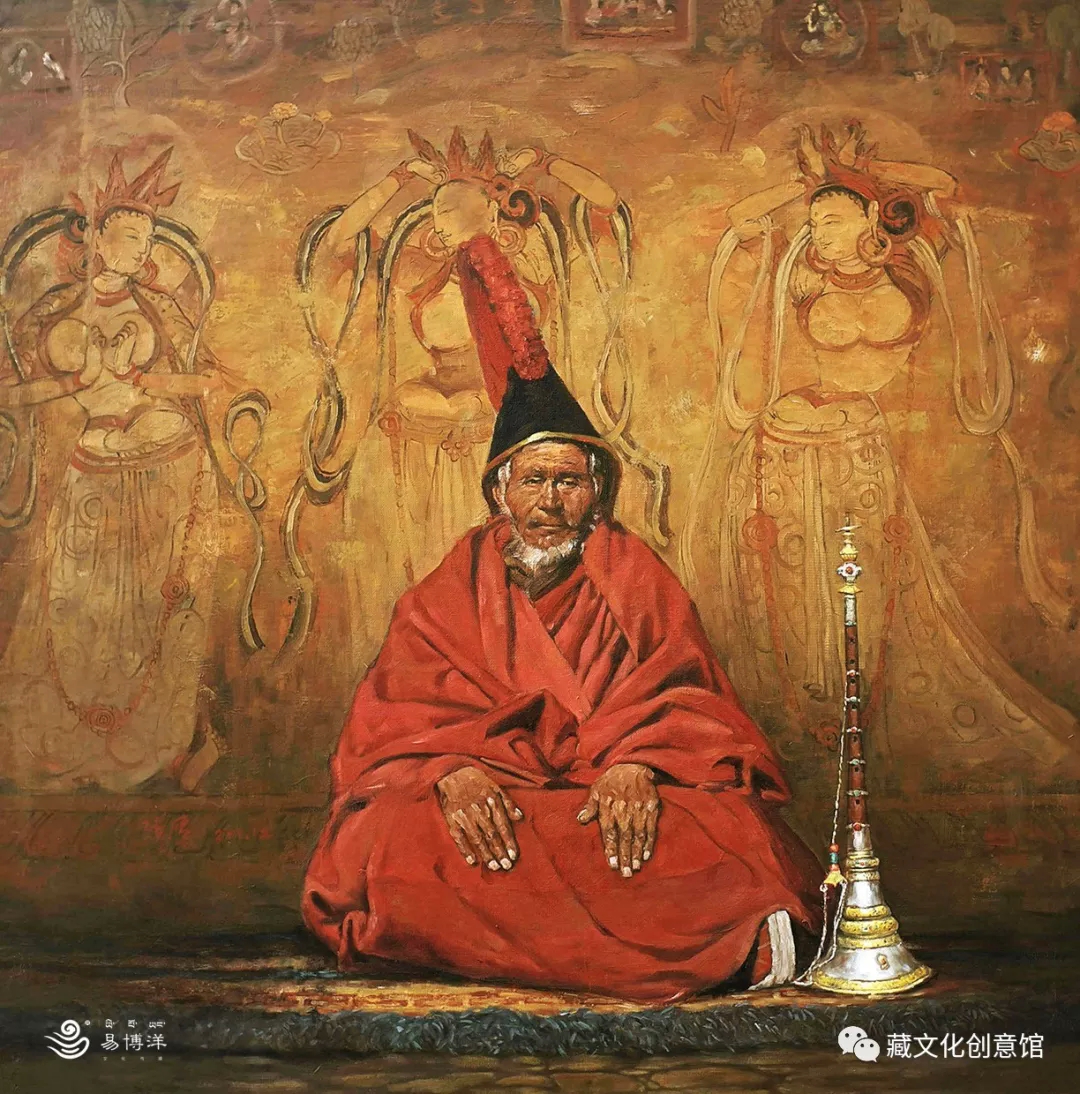
Old Musician 100x100cm oil on canvas 2012
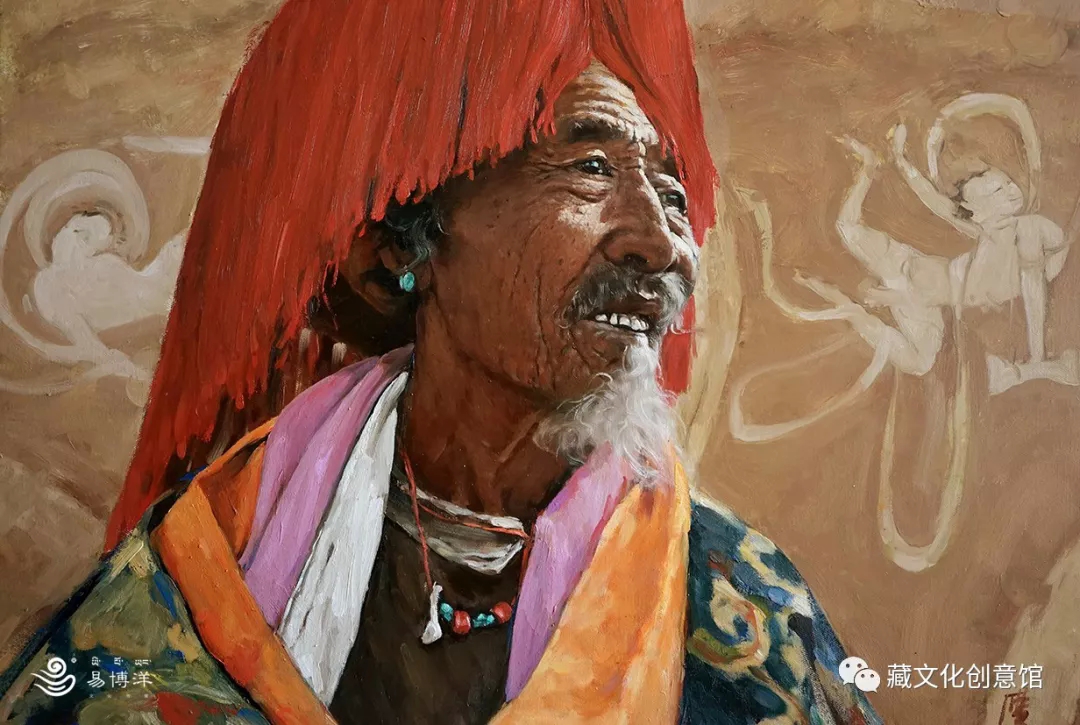
The old actor, 2014, oil painting, 100x80cm

Wedding 200X140 oil painting 2015
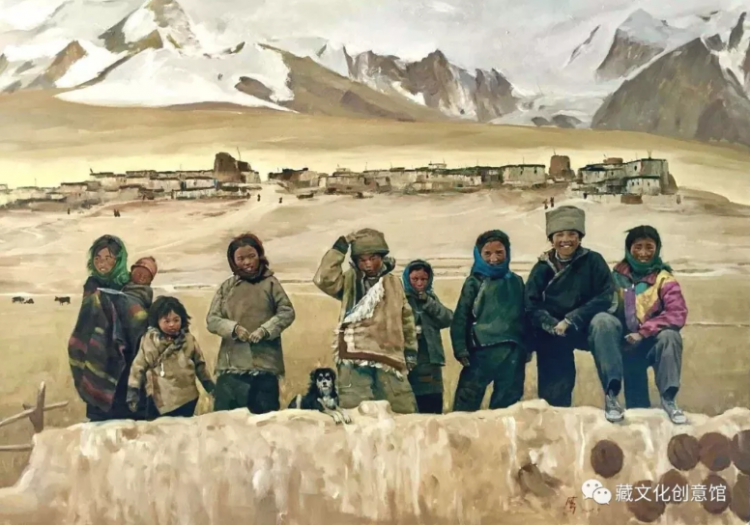
Children of the Himalayas 200x140cm oil painting 2015
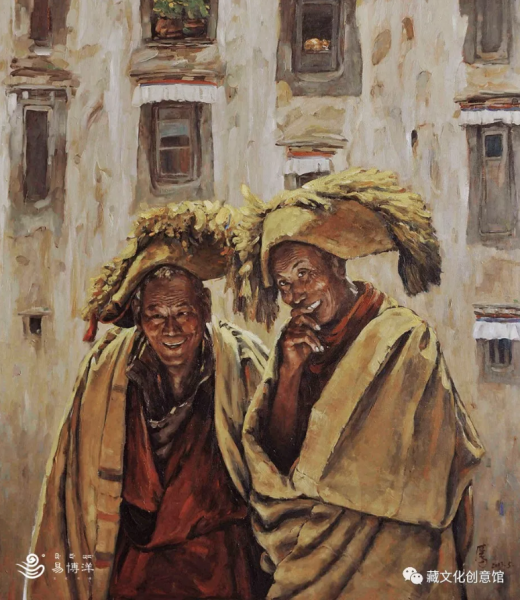
Window Shadow 2016 oil painting 120x160cm

Praying 140x120cm oil painting 2016

“Prairie Love” 2017 (oil on canvas) 160×120
Stepping into Tibet, Zhang Ying has been on the road of seeking all his life. He never felt that he chose Tibet, but Tibet chose him.
Indeed, it is difficult to sum up what I have gained in Tibet for more than 40 years in one or two sentences, just as there are countless forms of life and more than one way of living. In his eyes, life in Tibet is art, and every person and thing embodies the beauty of art and hides the philosophy of life.




